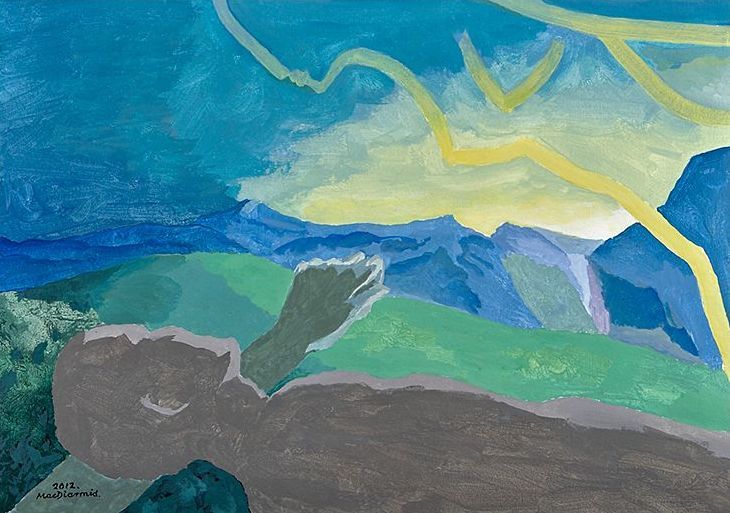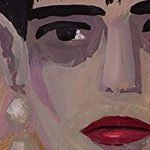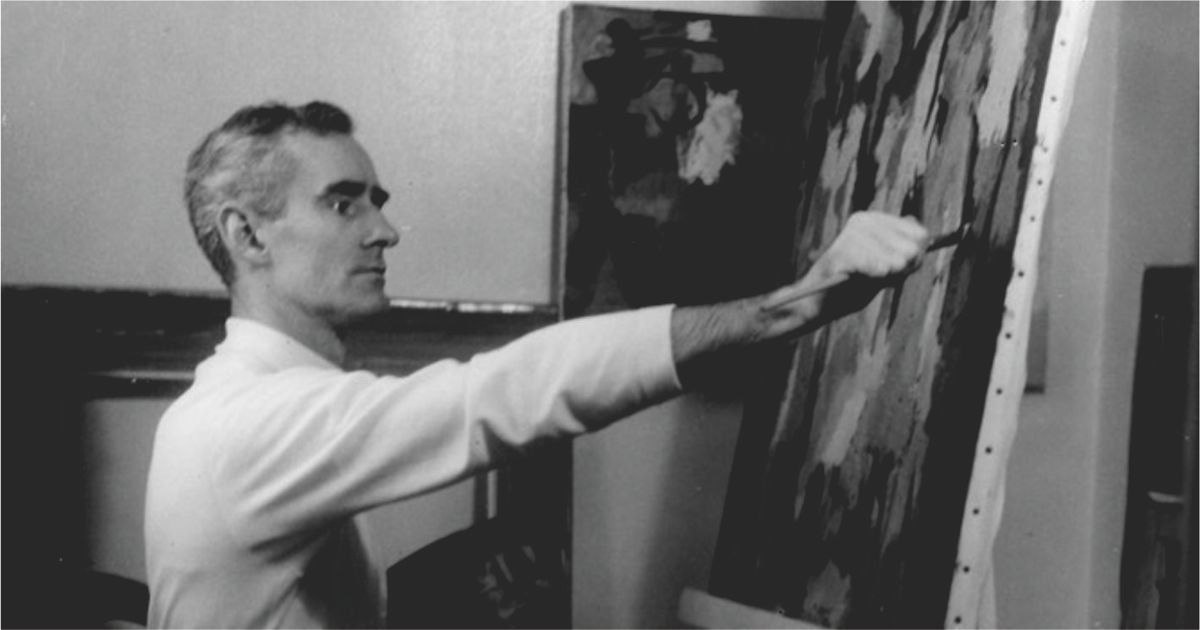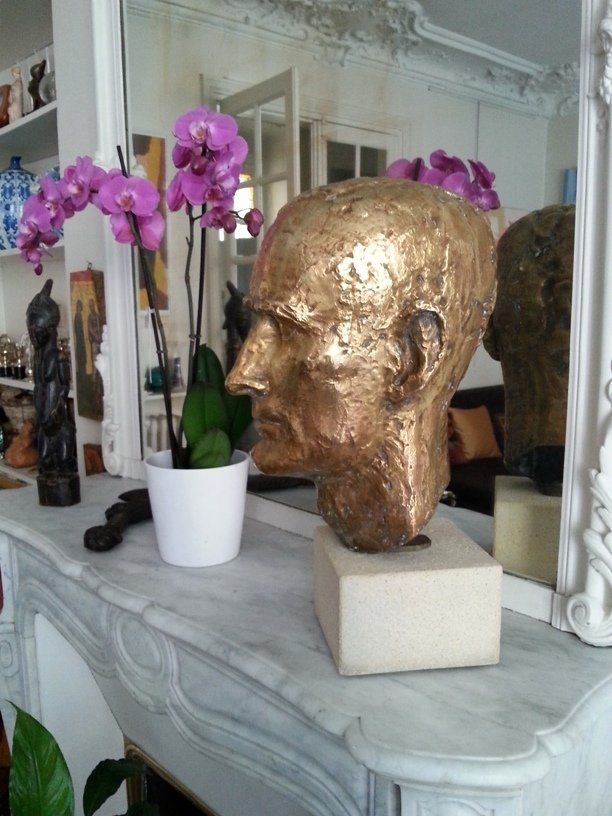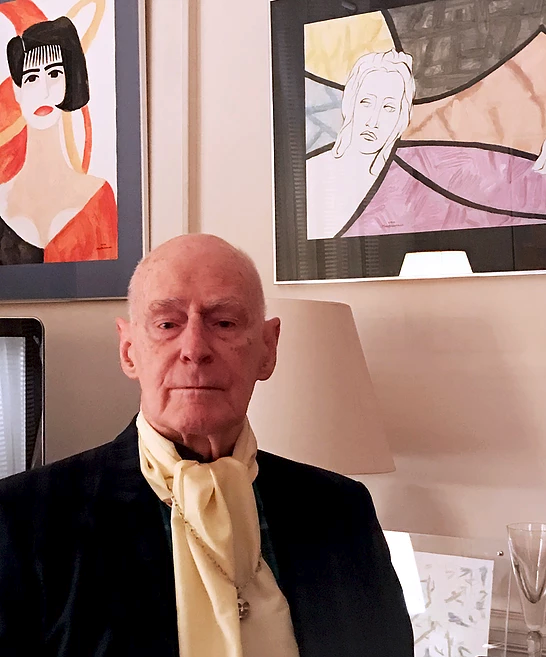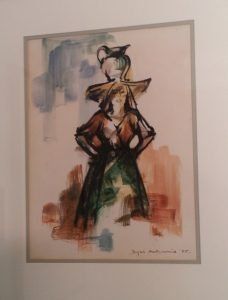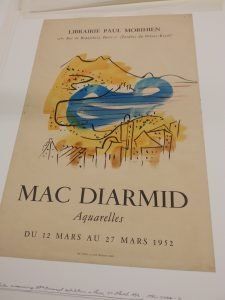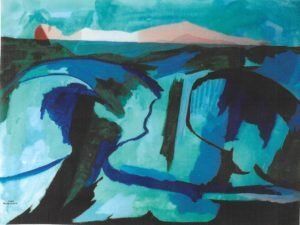Deep insights from a Paris exhibition
December 1972 was an encouraging time for a painter growing more comfortable in his own skin. Douglas MacDiarmid had recently bought his first real estate, the top two floors of an inner city building as home and studio, and he knew he was painting well.
Douglas successfully exhibited that month at Galerie Motte, in the very heart of the Paris arts district. Here all his current interests were drawn together – wild Corsican landscapes, people’s lives colliding, astonishing cityscapes, fine figure work, a few abstracts
The exhibition was a step up from earlier MacDiarmid shows – the paintings anchored in an illustrated catalogue with a three-page narrative overview from his friend Dr Nelly Finet. Now a respected Paris art historian, she introduced the artist and described the what and why, such as the predominant intellectual and philosophical themes his work aimed to communicate. This was the stuff upon which creative reputations were made.
Here is a translation of Nelly’s scene-setting notes for the 6-30 December show catalogue:
‘…Douglas MacDiarmid was born on the 14th November 1922 at Taihape, New Zealand. As his father was a doctor, he received a privileged education in a family where music and painting are more than just a pleasant pastime. As an adult he could not escape from the attraction which Paris – considered then the artistic home – held for him, nor from the legitimate wish of an individual who was born and educated in a new world, to return to the sources of an ancient civilisation and his Scottish ancestors. He left then his native land and went to live at the other end of the world: Paris. Difficult years, certainly, but worthwhile, where the artistic temperament of Douglas MacDiarmid found his ground. One is free to separate from one’s family, to transplant oneself to another country, but it entails struggle, tearing away from a formative and well-known past to an uncertain future in a country with new landscapes and unfamiliar landmarks. This can explain a certain shock of opposition in the expressions of this artist.
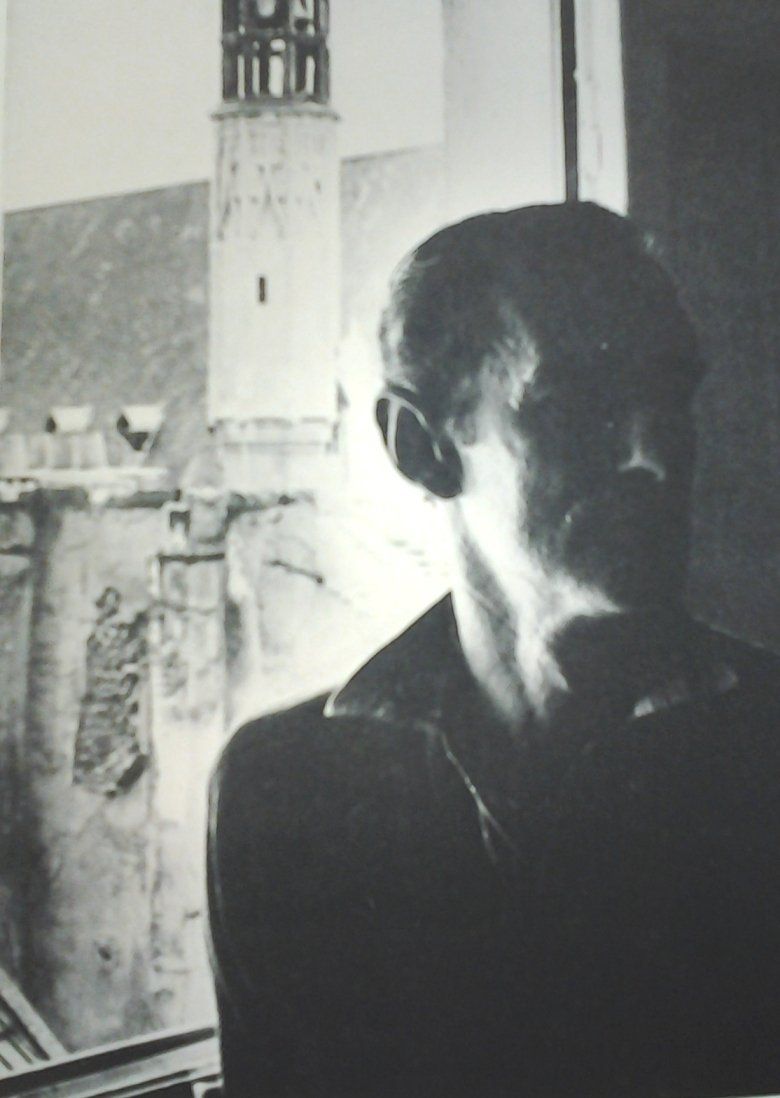
His first works are mostly landscapes which the artist brought back from his trips around the world and his native New Zealand. However, still-lives, portraits and compositions with people are also invariably present.
In 1965, one is CORSE [Corsica] XVI. Exploding forms as if shaken by a cataclysm. It is a broken landscape, turned over, where the substance is absorbed by the tumultuous vision of the artist, who is not indifferent to his surroundings, but engulfs it passionately and gives it back to us enriched by his own emotions. A serene sky reigns over the chaos and is illuminated by the rising sun, which participates at the re-creation of a tormented, discoloured burnt world, which is reborn and modified by the rhythm of the days, with each apparition of the morning star. MacDiarmid draws us along in his sensual possession of nature.
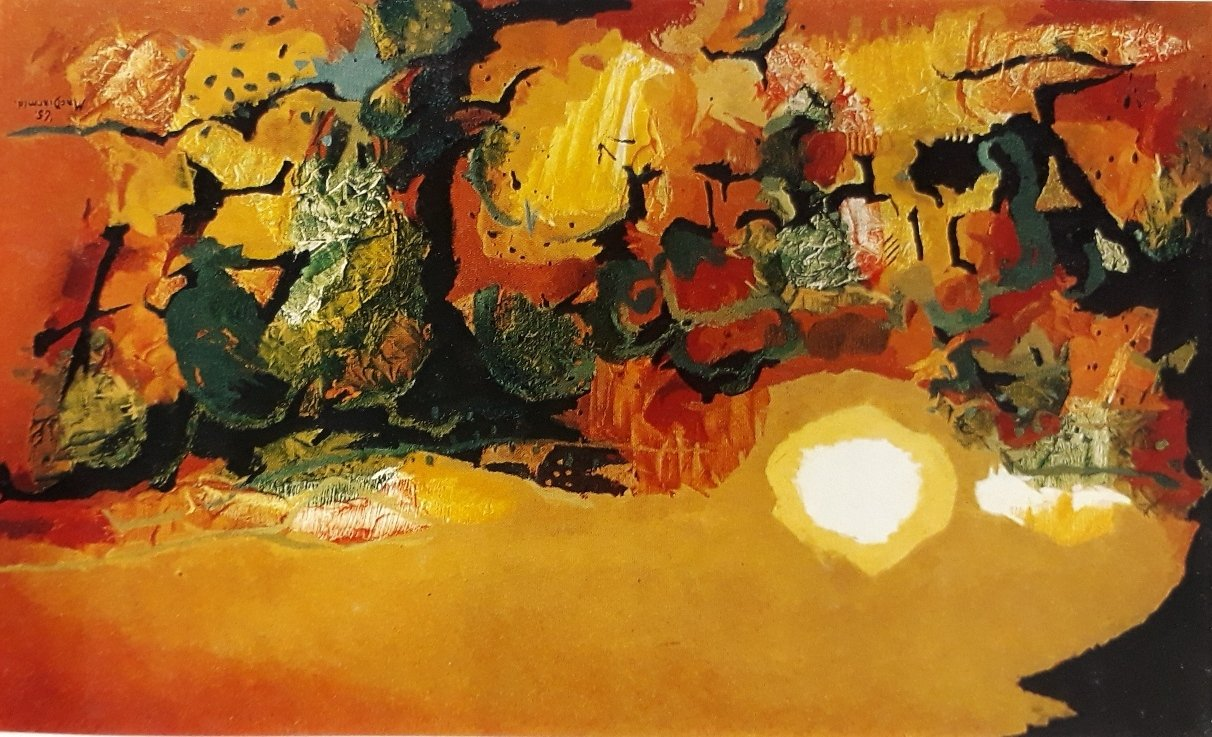
Around 1968-1969, he leaves the landscape in favour of human beings and their rapport with the world and their fellow creatures. Two themes are in opposition: our entanglement and our solitude (Loneliness). These are the people in a crowd, and people in space. CRÉATURES DANS ESPACE (Creatures in Space) XIV, 1969, is part of this series. The persons seem quite vulnerable, isolated in the immensity of the tumultuous ocean. Man is small, certainly, but not crushed by the surrounding nature; he is there in her, a triumphant and glorious cell, in the conquest of a confused space, where the sea, the water or earthy vegetation and the sky are all one. Here is no anxiety but the exaltation of man in nature. It is an audacious union of dynamic natural forces and the human being.’
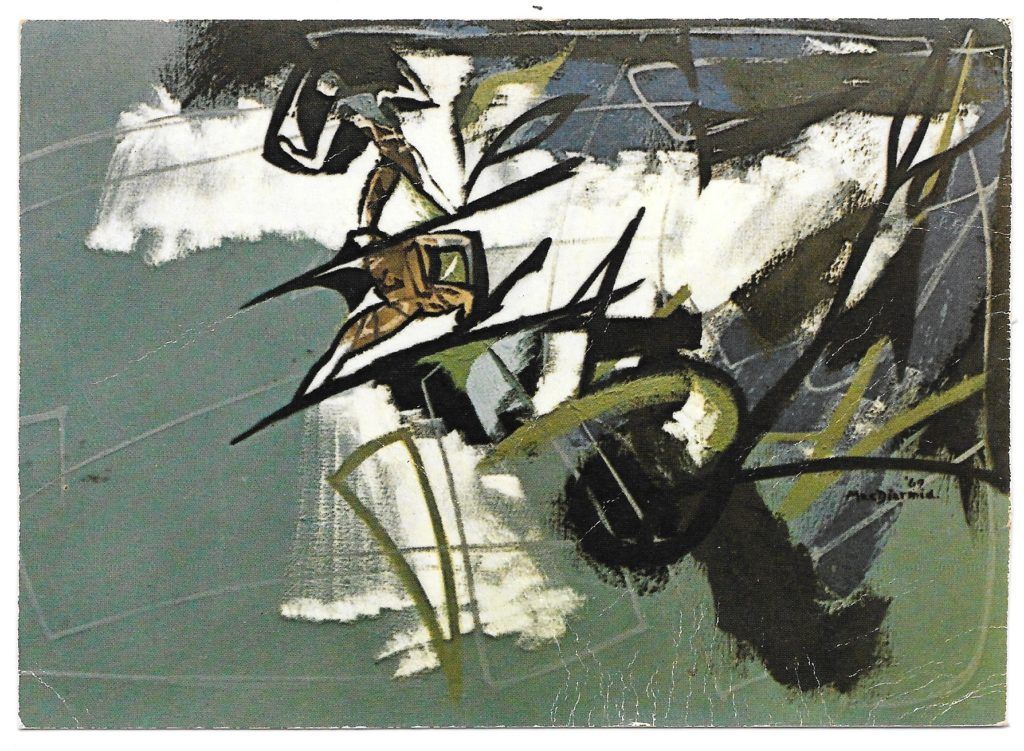
CRÉATURES EMMELÉES (Creatures Entangled) IV 1970, is more pessimistic. Natural elements are completely eliminated, only human beings, faces fill the canvas. They are near each other but at the same time isolated, each one in his own anxiety. The similarity of their perplexity makes their inability to communicate even more terrible, because one can sense that they are enclosed behind their dark glasses: this modern element of vision emphasises their isolation. The whole dramatic intensity is concentrated on the faces, no story, no scenery, no lively colours usually used by this painter, but only a subtle play of grey sustains this representation of the perplexity, anxiety and loneliness of modern man. But MacDiarmid does not like defeat, these are not subdued beings who accept their condition, these are fighters, blind, but they would like to see. Their upturned faces show them reaching for hope.
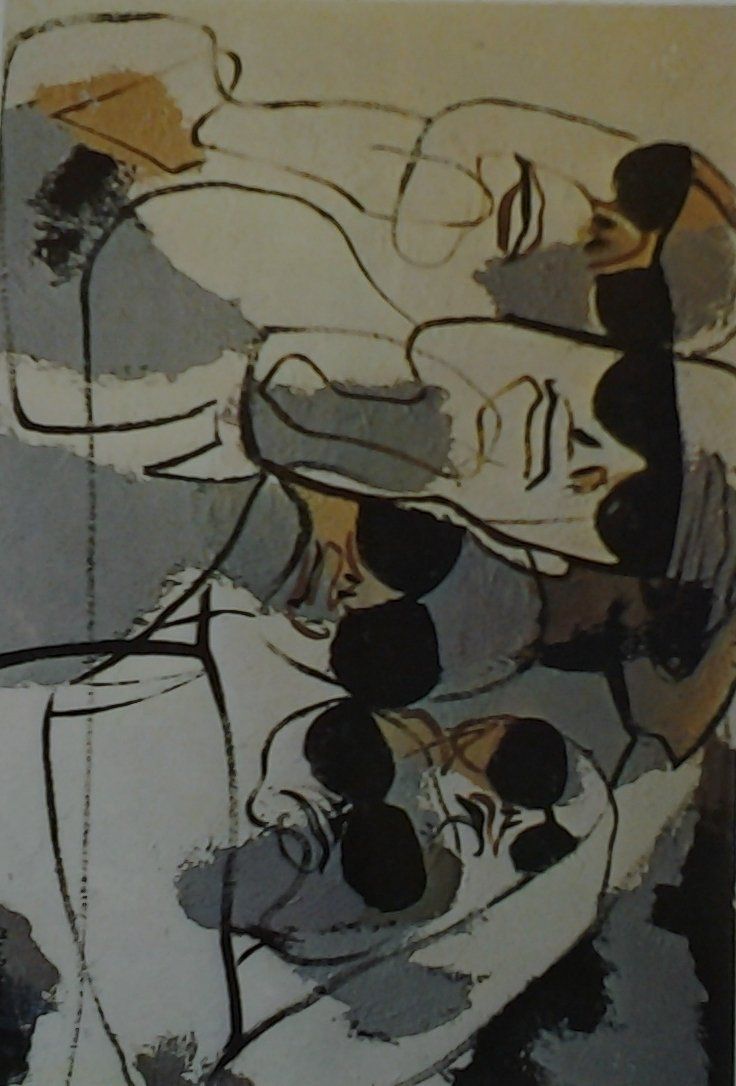
Although there are always some compositions with people, the actual theme preferred by the artist is Paris. The city, seen from his window, is for him a great source of inspiration. Dozens of canvases reveal it to us, never the same and always known (recognisable). MacDiarmid looks at the city in the same way in which he embraced nature. For him, the urban landscapes are as changeable as natural landscapes. The constant creative process to which the artist abandons himself, responds to the visual necessity which each artist has in him to communicate, be it of a fashion which seems instinctive to us as in his landscapes, or in the contrary very elaborate, as in his construction of the city. The latter are constructed around a real skeleton, constructed by great black lines, where the real nervous centre is attached – which constitutes rhythmic points. Beyond these encounters of energy, concentrated in black, forms taken up again by colour, gush forth. MacD opposes laziness, born from photographic vision, by another physical truth, offered through our bifocal vision.
PARIS LA NUIT (Paris at Night) I 1971, with its familiar monuments, which take on new dimensions under the floodlights, become giants against the dark sky. Rue Saint-Jacques burns in a thousand fires, which give the rest of the city, submerged in the night, forms where the strict reality is transformed, where the sensible aspect of the roofs, from the window, is clothed in a particular brightness, and appears in a beautiful rhythm of geometric forms, emphasised by the luminous play.
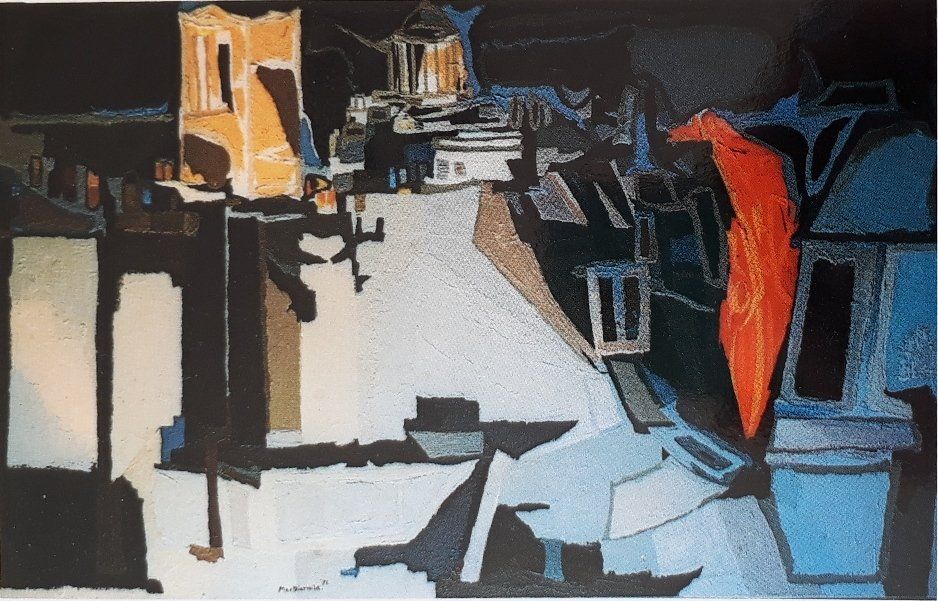
DE LA FENÊTRE (From the Window) IV, 1972. Here it is a different window, another face, a less familiar Paris. Some buildings pile up on the base of the canvas. Two TV antennas frail and aggressive are planted against the sky on fire. But the night pierces already the long white trail of a jet airplane, the marvellous audacity of man in his super-terrestrial flight, in the desire of a beyond, and at the same time conscious of his pitiful condition of a being who does not know where he goes in the night. It is a big brave cry that pierces and soars through the darkness.
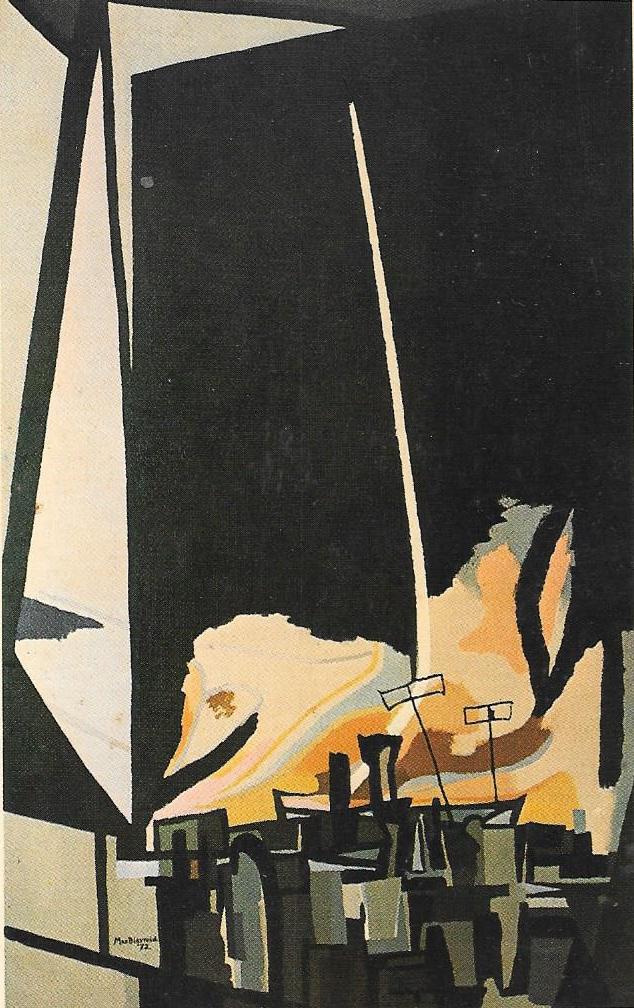
‘In the course of the last years, MacDiarmid arrives at a perfect mastery of his style. The audacity of the forms and colours is allied to a vision, frank, vigorous and rhythmic of the world. More than a visionary, MacDiarmid is an artist with a perceptive eye, gifted with a strong imagination, ‘our greatest vital force’ [is] how he likes to express it. He can moderate with intelligent and constructive thought his enthusiastic and passionate nature, in order to show rhythms and colours. This is not without contrasts: Serene skies which hover over a tormented nature, Lilliput beings lost in an infinite space, blind glances, but that wish to see. Neat Pantheon, precise towers which rise from a dark chaos, white tears in the black sky. MacDiarmid has a grip on the complexity of things, of the world, of human beings, all that represents life. The world is not composed of objects but of happenings…this is a sentence of [philosopher] Bertrand Russell, who influenced MacDiarmid very much in his conception of painting….’
Nelly Finet
By then, personal experience had taught Douglas to expect the unexpected. “Of course, something pretty wild always takes place during my shows over here,” he wrote home. “The day after opening was scarcely surprised to see the front of the gallery destroyed – boarded up and police standing guard over it! The gallery is beside the Beaux Arts and these student neighbours are constantly troubled with hooligan fascist attacks and bombs and riots – forever helmeted police and closed vans milling about. Nobody takes any notice anymore – except poor student who want to get to their studies and get knocked over the head instead. When I saw the damage, I assumed that my work had not been ‘politically oriented’ to suit intruders unknown. (Last show in ’68 had to close for these reasons – close in a hurry) This time it turned out to be no more than some idiot who’d driven a fat Mercedes smack into the gallery during the night – and this, half way down a narrow, straight street!”
No need for the self-professed ‘Rainbow Worrier’ to fret. This time the buyers were willing and the critics kind.
To read more about Douglas MacDiarmid’s fascinating journey through life Buy your copy of Colours of a Life – the life and times of Douglas MacDiarmid by Anna Cahill (2018)
To read more about Douglas MacDiarmid’s fascinating journey through life Buy your copy of Colours of a Life – the life and times of Douglas MacDiarmid by Anna Cahill (2018)

